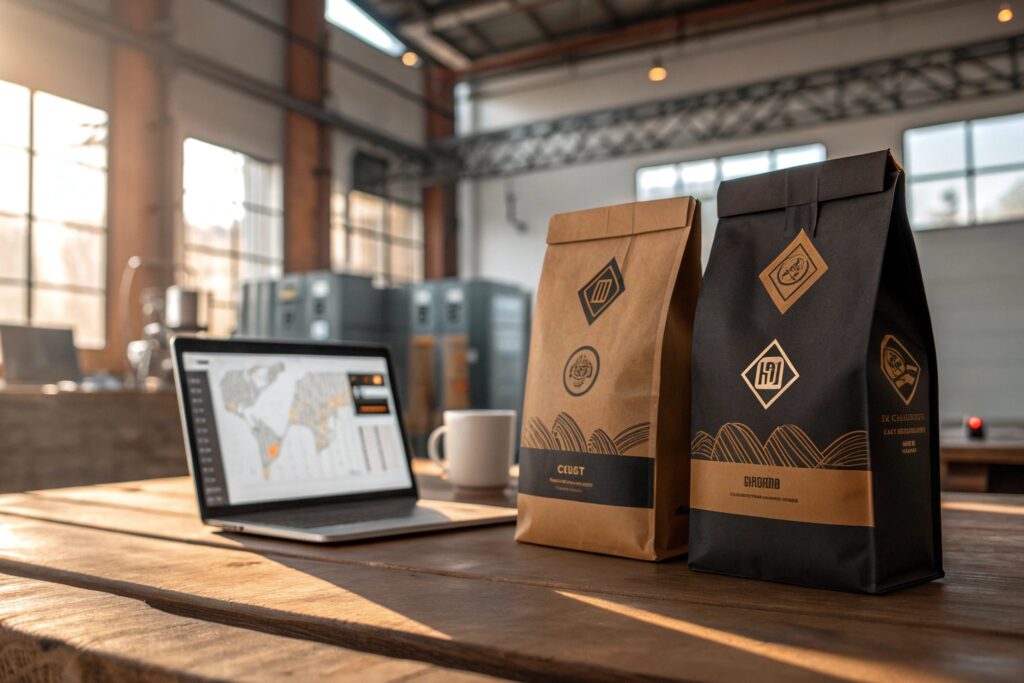Sourcing the right coffee bags is not just about cost — it’s about brand impact, freshness, and logistics. Finding a dependable supplier in China can change your margins.
You can buy wholesale coffee bags1 from factories in China via trade shows, sourcing platforms, or direct factory communication. Key suppliers offer custom printing2, low MOQ3, and export experience.
I’ve worked with dozens of coffee brands across the globe. From North America to Singapore, many of them struggle to find the right packaging partner — not just a vendor. Here’s what I’ve learned that might help you too.
Who makes artisan coffee bags4?
Not every supplier understands specialty coffee culture.
Artisan coffee bags are made by specialized packaging manufacturers that focus on custom prints, barrier materials, and visual storytelling.
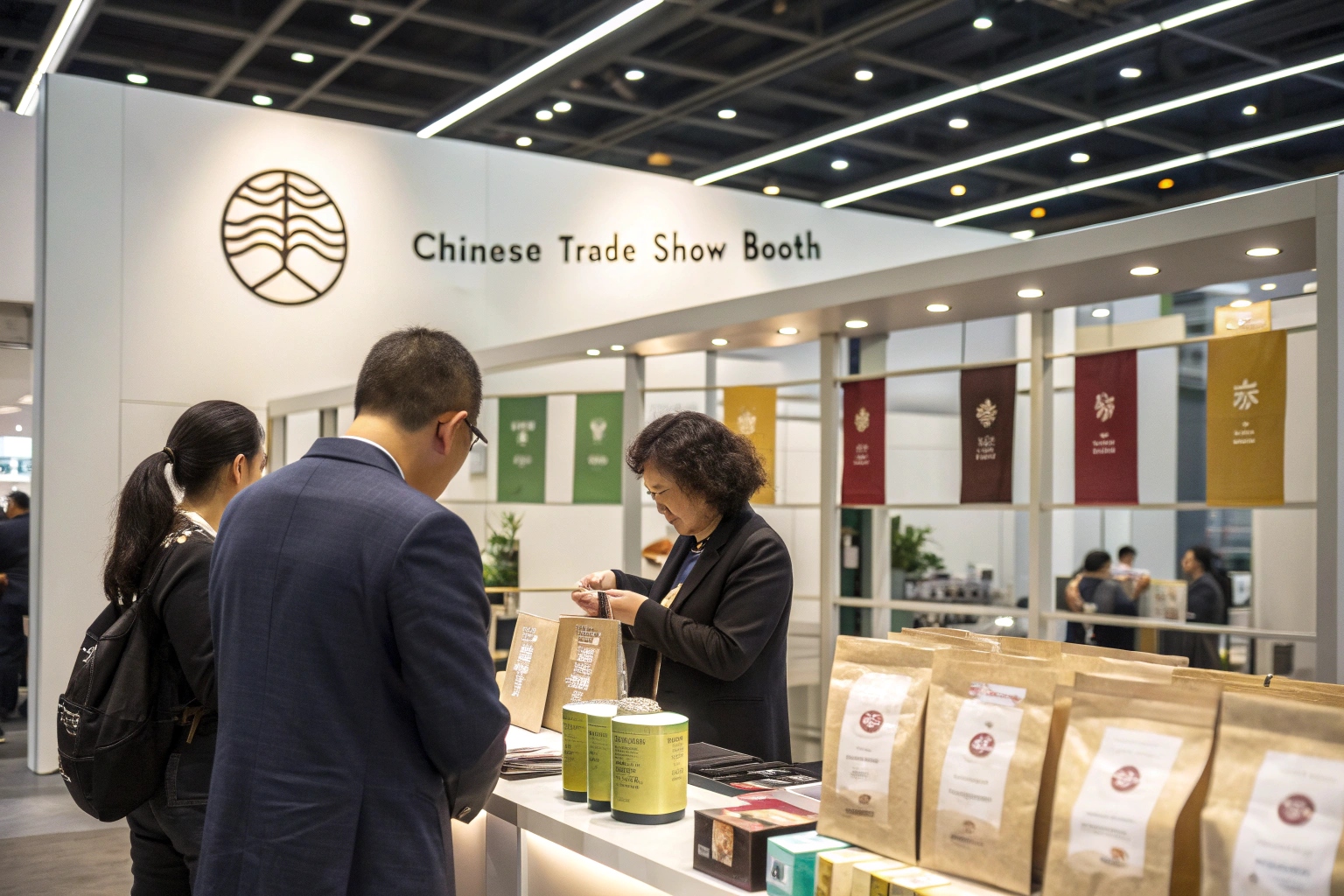
Some factories in China are evolving fast. They’ve gone beyond bulk printing to support unique designs, small batch runs, and eco-conscious features.
Dive Deeper: What makes a supplier “artisan-friendly”?
Here’s what I look for when sourcing artisan coffee bag manufacturers:
1. Design Flexibility
A good supplier can print:
- Matte or soft-touch finishes
- Metallic ink
- Custom windows
- Kraft + foil combinations
2. Low MOQ
Artisan brands don’t want 50,000 bags upfront. Factories like IMIPAK support orders starting from 200 pieces, making small brand launches easier.
3. Custom Shapes & Closures
Options like:
- Zipper seals
- One-way degassing valves
- Tin-ties or resealable tops
These aren’t standard with all printers — but they’re essential for premium coffee packaging.
| Feature | Common in Artisan Bags? |
|---|---|
| Kraft Paper + Aluminum | ✅ |
| Compostable Materials | ✅ |
| Transparent Windows | ✅ |
| Digital Print (short-run) | ✅ |
You want a factory that doesn’t just print — they should co-create.
How big are trade coffee bags5?
Not all coffee bags are created equal. Size depends on purpose.
Trade coffee bags for wholesale typically range from 250g to 1kg, while sample bags can be as small as 50g.
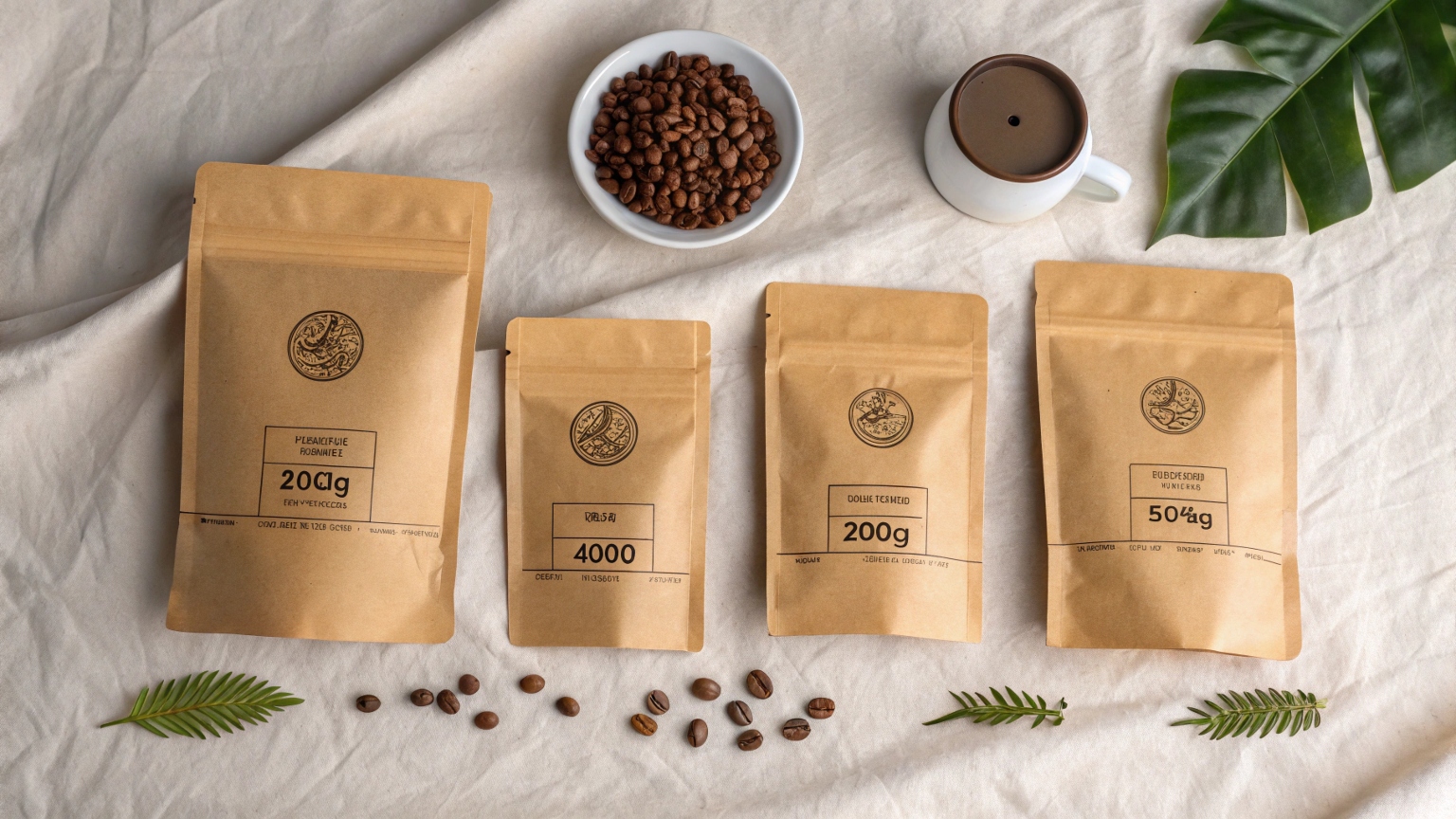
Choosing the right size matters for branding, logistics, and freshness.
Dive Deeper: Standard coffee bag sizes
Here’s a quick breakdown of commonly used bag sizes:
| Bag Weight | Dimensions (Approx) | Use Case |
|---|---|---|
| 50g | 80mm x 140mm x 50mm | Sample bags |
| 250g | 120mm x 200mm x 60mm | Retail shelves |
| 500g | 135mm x 260mm x 70mm | Online sales |
| 1kg | 180mm x 300mm x 90mm | Wholesale / Bulk resale |
For bulk buyers, the most requested sizes are 250g and 1kg, especially for roasted coffee. Some trade customers also prefer flat-bottom or box pouches because they display better in stores.
If you’re not sure what size works for your market, I suggest ordering a mix of sizes for testing. That’s what many of our IMIPAK clients do before launching a new product line.
Can you ship coffee to China?
Many wonder whether roasted or green coffee can be imported into China.
Yes, you can ship coffee into China, but it must meet customs, labeling, and food safety regulations.
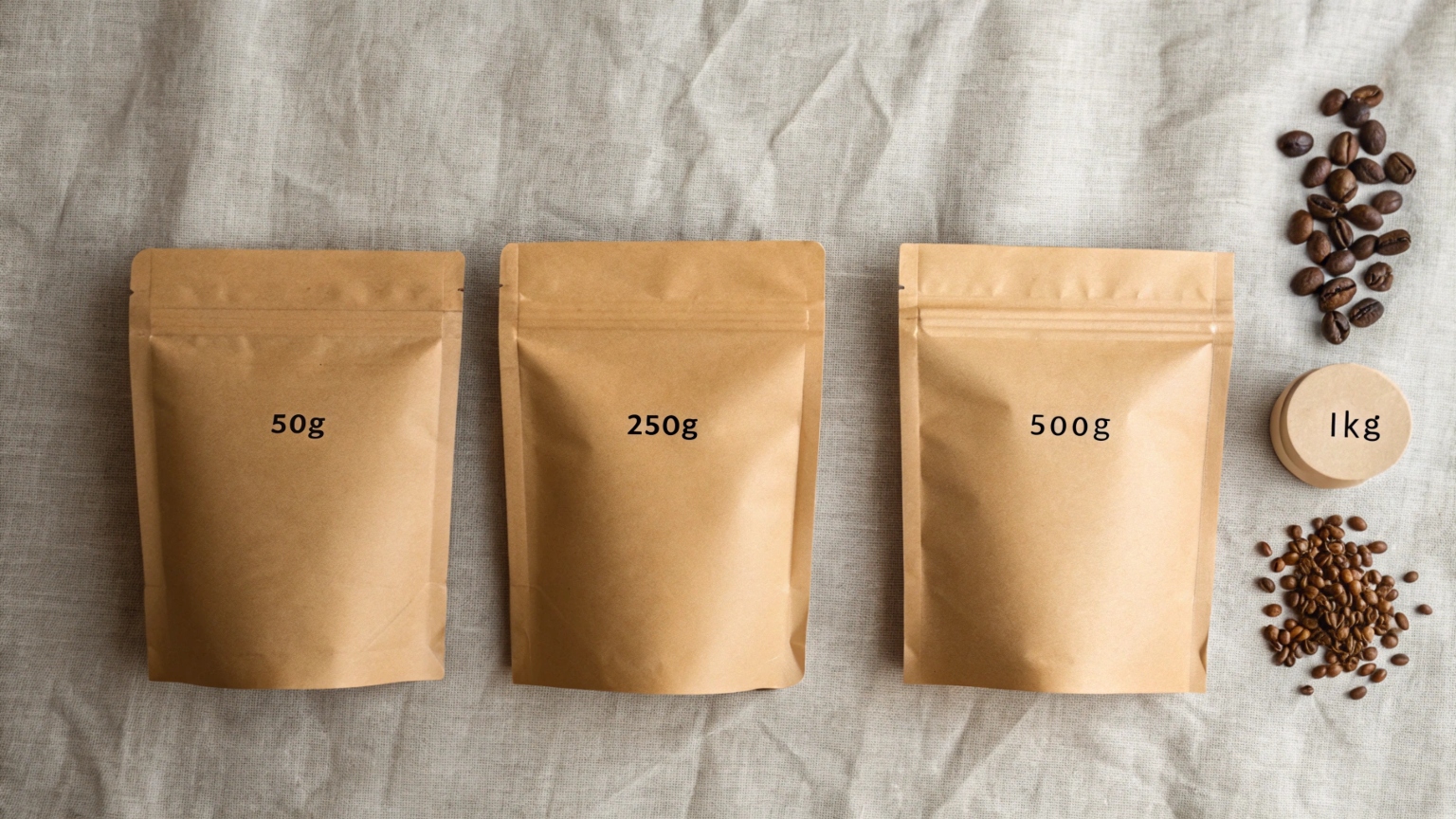
China’s specialty coffee scene is growing fast. Both green and roasted beans are entering via ports like Shanghai and Guangzhou.
Dive Deeper: What are the rules?
Here are the essentials:
For Green Coffee Beans:
- No fumigation needed if clean
- Must be declared as raw agricultural product
- Requires inspection and customs clearance
For Roasted Coffee:
- Must have shelf-life labeling
- Requires Chinese Nutrition Facts Label (GB standard)
- Subject to random inspection
| Coffee Type | Import Permission | Labeling Required | Common Ports |
|---|---|---|---|
| Green Beans | ✅ | Minimal | Guangzhou, Dalian |
| Roasted Beans | ✅ | Mandatory | Shanghai, Shenzhen |
A key point: if your packaging doesn’t meet GB food contact standards, your shipment might be blocked. That’s why many foreign sellers order packaging from Chinese factories before shipping beans in.
At IMIPAK, we support both domestic and overseas clients who want packaging compliant with CN and EU/US standards.
How to package coffee for resale?
Coffee loses flavor when exposed to air, light, and moisture.
To package coffee for resale, use high-barrier materials6, one-way valves7, and heat sealing to preserve aroma and freshness.
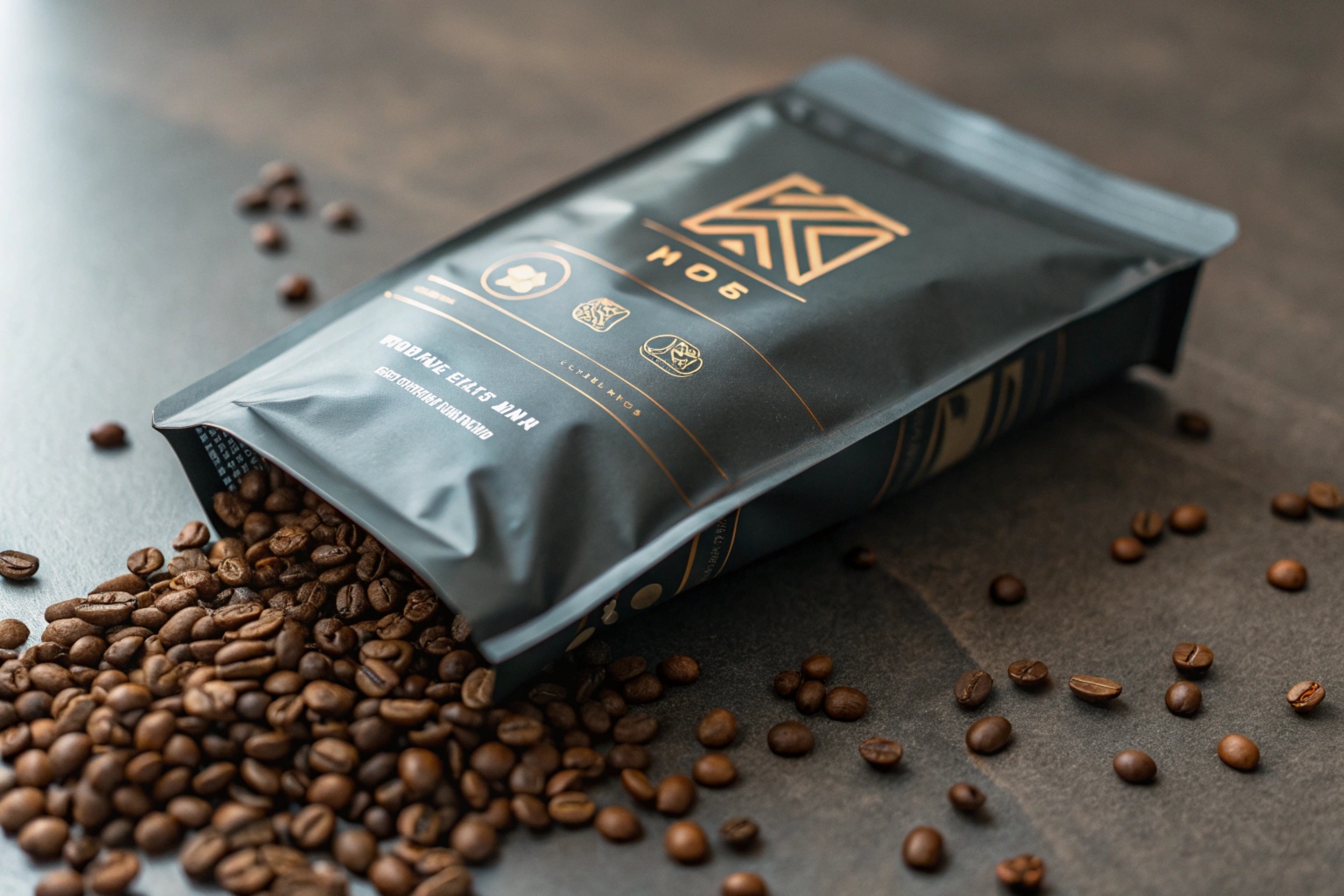
How you package also depends on your resale channel — online, retail, or wholesale.
Dive Deeper: What makes a good resale coffee bag?
Here are five essentials:
1. Barrier Layer Material
- PE/AL/PE or Kraft + Foil offers high oxygen resistance.
- Compostable bags like PLA work for eco-brands.
2. Degassing Valve
- Allows CO2 to escape without letting air in.
- Extends shelf life, especially for roasted beans.
3. Zipper or Reseal Feature
- Makes the product last longer after opening.
- Adds convenience for customers.
4. Custom Branding
- Print area for logo, roast date, and origin story.
- Helps position your product on shelves.
5. Batch & Date Label Area
- Compliance with food regulations.
- Useful for inventory and recalls.
| Packaging Feature | Purpose |
|---|---|
| One-way Degassing Valve | Keeps roasted beans fresh |
| Matte Finish | Premium visual appeal |
| Zipper Lock | Reseal after use |
| Kraft Outer Layer | Eco-brand storytelling |
For clients reselling in boutique stores, we also suggest using box-bottom pouches8 — they look more stable and luxurious on shelf.
Conclusion
You can buy artisan-level, wholesale coffee bags1 from China — with the right supplier, it’s easier than ever.
-
Explore this link to discover reliable suppliers for wholesale coffee bags that can enhance your brand. ↩ ↩
-
This resource will explain the benefits of custom printing for coffee bags and how to get started. ↩
-
Understanding low MOQ can help you make informed decisions about your packaging orders. ↩
-
Learn about artisan coffee bags and find specialized suppliers that cater to unique packaging needs. ↩
-
Find out the different sizes and specifications of trade coffee bags for wholesale purposes. ↩
-
Understand the importance of high-barrier materials in coffee packaging to maintain quality. ↩
-
Discover how one-way valves work to keep coffee fresh and why they are essential. ↩
-
Learn about box-bottom pouches and how they can enhance the presentation of your coffee products. ↩

